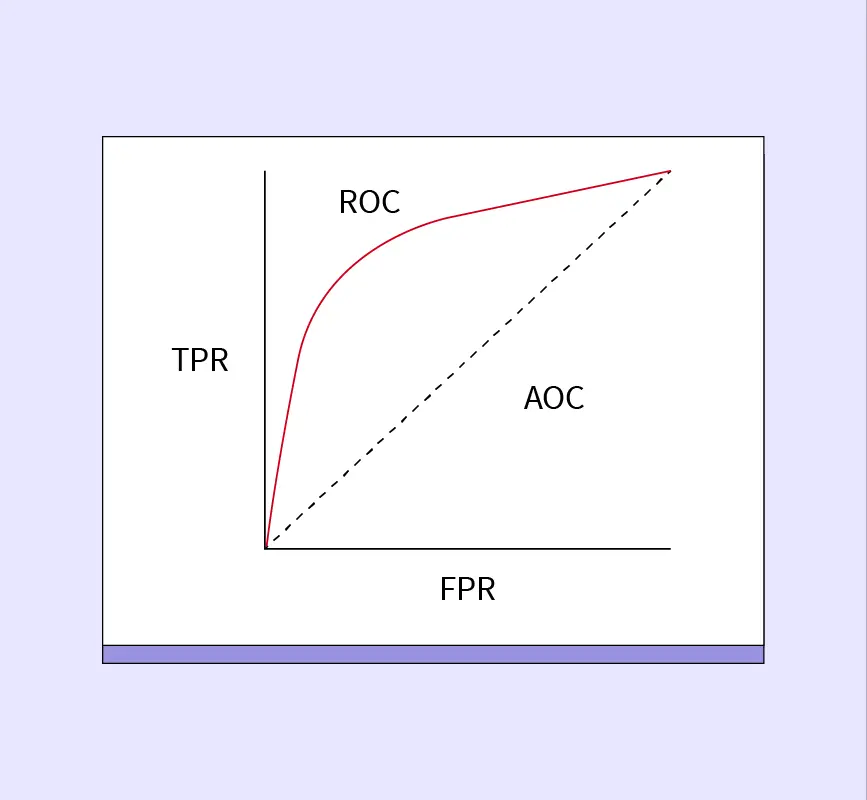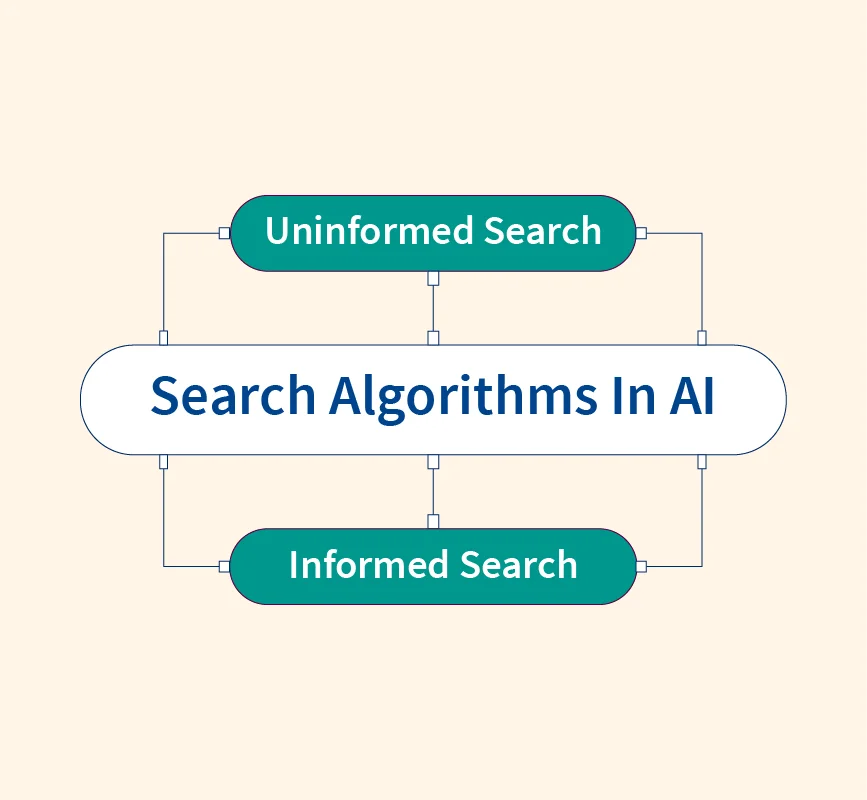Genetic Algorithms (GAs) are a type of search heuristic inspired by Darwin’s theory of natural selection, mimicking the process of biological evolution. These algorithms are designed to find optimal or near-optimal solutions to complex problems by iteratively improving candidate solutions based on survival of the fittest.
The primary purpose of Genetic Algorithms is to tackle optimization and search problems. By leveraging evolutionary principles such as selection, crossover, and mutation, GAs explore large solution spaces efficiently, even for problems where traditional methods struggle.
Genetic Algorithm in machine learning plays a significant role in tasks like hyperparameter tuning, feature selection, and model optimization. For instance, they can optimize the architecture of a neural network or select the most relevant features for improving prediction accuracy.
Real-World Examples:
- Neural Network Optimization: Using GAs to identify the best combination of hyperparameters (e.g., learning rate, number of layers).
- Logistics: Solving routing problems, such as optimizing delivery routes for cost and time efficiency.
Genetic Algorithms offer a versatile and powerful approach to solving complex, multi-dimensional problems, making them indispensable in various fields, including machine learning, robotics, and operations research.
How Genetic Algorithms Work?
Genetic Algorithms (GAs) operate through an iterative process inspired by natural evolution. This process involves generating, evaluating, and evolving populations of candidate solutions to find the optimal outcome. The workflow can be broken down into several key stages:
1. Initialization
The process begins by generating a population of candidate solutions, often represented as chromosomes. These solutions can be generated randomly or using predefined methods to ensure diversity in the search space.
Example: For a binary optimization problem, chromosomes might be initialized as binary strings (e.g., 101010 or 110011).
2. Fitness Evaluation
Each candidate solution is evaluated using a fitness function that measures its quality or suitability for solving the problem. The fitness function is problem-specific and determines how well a solution meets the objective.
Example: In the Traveling Salesman Problem (TSP), the fitness is calculated as the inverse of the total distance traveled. Shorter routes yield higher fitness scores.
3. Selection
To create the next generation, GAs select the fittest solutions from the current population. Various methods ensure that better solutions have a higher probability of being chosen:
- Roulette Wheel Selection: Solutions are selected based on their fitness proportion.
- Tournament Selection: Randomly selects a subset of candidates, and the fittest among them is chosen.
- Rank Selection: Ranks solutions by fitness and selects based on their position.
4. Crossover (Recombination)
Crossover, or recombination, involves combining the genetic material of two parent solutions to produce offspring. This process introduces variability and explores new areas of the search space.
Types of Crossover:
- Single-Point Crossover: Splits chromosomes at one point, exchanging segments.
- Two-Point Crossover: Splits chromosomes at two points for more diverse offspring.
- Uniform Crossover: Randomly exchanges genes between parents.
5. Mutation
Mutation introduces random changes to the chromosomes to maintain diversity and avoid premature convergence. It helps the algorithm explore unexplored areas of the search space.
Example: In a binary chromosome, mutation might involve flipping a 0 to 1 or vice versa (e.g., 101010 becomes 101110).
6. Termination
The algorithm terminates when a specific termination criterion is met, such as:
- Achieving the desired fitness score.
- Reaching the maximum number of generations.
Through these iterative steps, Genetic Algorithms efficiently evolve populations to converge on optimal or near-optimal solutions for complex problems.
Key Components of Genetic Algorithms
Genetic Algorithms (GAs) rely on several core components that work together to solve optimization and search problems effectively.
Search Space
The search space represents the range of all possible solutions for a given problem. It is essentially the domain within which the algorithm operates to identify the optimal or near-optimal solution.
GAs excel at exploring this space efficiently by balancing exploitation (focusing on promising areas) and exploration (investigating new areas), ensuring a higher chance of finding the best solution.
Example: For the Traveling Salesman Problem, the search space includes all possible permutations of cities in the route.
Fitness Function
The fitness function evaluates how well a candidate solution performs relative to the problem’s objectives. A well-designed fitness function is crucial because it directly influences the algorithm’s ability to converge on the optimal solution.
Example: In a scheduling problem, the fitness function might evaluate the minimization of resource conflicts or task completion times.
Genetic Operators
Selection, crossover, and mutation are the primary genetic operators that drive the evolutionary process:
- Selection: Chooses the fittest individuals to contribute to the next generation.
- Crossover: Combines genetic material from selected parents to generate diverse offspring.
- Mutation: Introduces random changes to maintain diversity and avoid local optima.
Together, these components enable GAs to iteratively improve solutions, making them highly effective for complex problem-solving tasks.
Applications of Genetic Algorithms in Machine Learning
Genetic Algorithms (GAs) have a broad range of applications in machine learning, where they enhance model performance, reduce complexity, and tackle optimization challenges effectively.
1. Hyperparameter Optimization
GAs are frequently used to automate the process of hyperparameter tuning, which is critical for improving machine learning model performance. Instead of relying on grid or random search, GAs explore combinations of hyperparameters more efficiently by leveraging evolutionary principles.
Example: In neural networks, GAs can optimize learning rates, layer configurations, and dropout rates to achieve better accuracy. Similarly, for Support Vector Machines (SVMs), GAs can fine-tune kernel parameters to enhance classification performance.
2. Feature Selection
Selecting the most relevant features from a dataset is crucial for reducing model complexity and improving accuracy. GAs identify optimal subsets of features by evaluating their impact on model performance through a fitness function. This helps reduce overfitting and computational costs.
Example: In a classification task, GAs can identify the most informative features from a high-dimensional dataset, improving the classifier’s accuracy.
3. Neural Network Optimization
GAs are employed to optimize neural network architectures and weights, making them highly effective in designing robust models. By evolving network parameters over generations, GAs help discover architectures that balance accuracy and computational efficiency.
Example: GAs can optimize the number of neurons, hidden layers, and activation functions in a deep learning model to enhance predictive accuracy.
4. Other Applications
GAs extend beyond traditional machine learning tasks and find utility in diverse areas:
- Optimizing Supply Chain Routes: GAs minimize transportation costs and delivery times by solving complex routing problems.
- Evolving Strategies in Gaming AI: GAs enable AI agents to learn and adapt strategies in dynamic gaming environments.
- Automated Code Generation: GAs are used to evolve and generate code snippets that solve specific programming tasks.
Advantages of Genetic Algorithms
Genetic Algorithms (GAs) offer several unique advantages, making them highly effective for solving complex optimization problems:
- Global Optimization: GAs are capable of finding global optima in complex, nonlinear, and high-dimensional search spaces, avoiding the pitfalls of local optima that plague traditional methods.
- Adaptability: They can be applied to a wide range of problems, including combinatorial optimization, continuous optimization, and machine learning tasks, showcasing their versatility across domains.
- No Gradient Requirement: Unlike gradient-based optimization methods, GAs do not rely on differentiable functions. This makes them suitable for problems with non-differentiable or discontinuous fitness landscapes, where traditional approaches fail.
Limitations of Genetic Algorithms
While Genetic Algorithms (GAs) are powerful tools, they come with certain limitations that can impact their effectiveness:
- Computational Cost: GAs often require significant computational resources due to the evaluation of large populations over multiple generations, especially for complex problems.
- Premature Convergence: There is a risk of the algorithm converging to local optima, particularly if diversity within the population is not maintained.
- Dependence on Fitness Function: The performance of GAs heavily relies on the quality and design of the fitness function. Poorly defined fitness functions can lead to suboptimal solutions or slow convergence.
Example Problem Using a Genetic Algorithm
Problem Statement
One classic example of applying Genetic Algorithms (GAs) is the Traveling Salesman Problem (TSP). The goal is to find the shortest possible route that visits a set of cities exactly once and returns to the starting point.
Steps in Solving the Problem
- Representation: Represent the sequence of cities as a chromosome, where each city corresponds to a gene. For example, a chromosome might look like [A, B, C, D, E], representing a route through cities.
- Fitness Function: Define the fitness function to evaluate each route. In TSP, the fitness is inversely proportional to the total distance of the route. Shorter distances yield higher fitness scores.
- Genetic Operators:
- Selection: Use methods like tournament selection to choose the best-performing routes for reproduction.
- Crossover: Combine the genetic material of two parent routes to generate new offspring routes, ensuring no cities are repeated.
- Mutation: Introduce small changes, such as swapping two cities, to maintain diversity in the population and avoid premature convergence.
Here is a simple Python snippet to demonstrate GAs for solving TSP:
import random
# Example cities and distances
cities = ['A', 'B', 'C', 'D', 'E']
distances = {
('A', 'B'): 4, ('A', 'C'): 2, ('A', 'D'): 7, ('A', 'E'): 3,
('B', 'C'): 5, ('B', 'D'): 1, ('B', 'E'): 6,
('C', 'D'): 3, ('C', 'E'): 8,
('D', 'E'): 4
}
# Fitness function: calculates the total distance of a route
def fitness(route):
total_distance = sum(distances.get((route[i], route[i+1]), 0) for i in range(len(route) - 1))
total_distance += distances.get((route[-1], route[0]), 0) # Return to start
return 1 / total_distance # Fitness is inverse of distance
# Generate initial population
def generate_population(size):
return [random.sample(cities, len(cities)) for _ in range(size)]
# Perform GA operations (selection, crossover, mutation) and iterate over generations
# [Details omitted for simplicity in this example]This demonstrates the basic idea of solving the TSP using GAs, where routes evolve over generations to minimize the total distance.
The Role of Genetic Algorithms in Modern AI
Genetic Algorithms (GAs) play a pivotal role in modern AI by enhancing and complementing techniques like deep learning and reinforcement learning. They are used to optimize neural network architectures, hyperparameters, and learning strategies, enabling AI systems to achieve better performance with minimal manual intervention.
GAs also excel in evolving strategies for adaptive systems and autonomous agents, such as gaming AIs and robotics. By simulating evolutionary processes, GAs allow these agents to develop behaviors and solutions that adapt to dynamic environments, ensuring robustness and efficiency.
Their versatility makes GAs a vital tool in advancing cutting-edge AI applications.
References:


